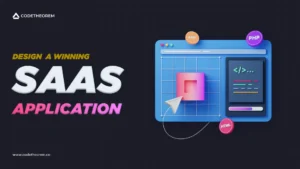Article content
- Introduction
- What is a Customer Journey Map?
- What Are The Main Components of a Customer Journey Map?
- What Are the Types of Customer Journey Maps?
- How to Create a Customer Journey Map? Step by Step Process
- What Are the Benefits of User Journey Mapping?
- When Should You Create a Customer Journey Map?
- Customer Journey Map Examples
Introduction
Have you ever wondered why someone adds so many items to their cart and suddenly abandons or clears it? If yes, was it a poor brand or navigation experience? Or was it the price? Or it could be payment issues. Understanding what led the customer to abandon the cart is very important. This is precisely where a customer journey map helps. That’s how you understand various things across the custom journey. It can include:
- Major pain points
- Major touch points (customer interaction points)
- Blockers
- Customer behaviors
- Actions in the customer journey.
Now, suppose you’re wondering what is a customer journey map. In that case, this blog will walk you through everything there is to know about customer journey maps. Moreover, it covers everything from their types to customer journey mapping tools and examples. Also, you learn the process of creating a customer journey map. So, let’s dive in.
What is a Customer Journey Map?
A customer journey map is a compact visualization of an end-to-end customer experience. These take up various forms, such as:
- Infographics
- Illustrations
- Diagrams
- Explainer graphics
Moreover, it illustrates all the touch points where your customers come in contact with your brand, online or offline. Also, customer journey maps help you look at your brand, product, and processes from the customer’s point of view. Consequently, this lets you visualize the customer journey through the funnel.
Note that it is not something you can predict. Specially purely based on your inner instincts and personal perspective. However, it is definite to the physical experiences your customers have while using your product and services. Hence, according to Hubspot, the best way to understand your customers is to ask them directly.
What Are The Main Components of a Customer Journey Map?
There are five main elements of customer journey mapping. Each one of these elements has been elaborated further:
1. User Personas
A user persona is all about the users who experience the journey. You make the journey map for the one who experiences the journey (Actor). Usually, the actors align with the customer personas. Moreover, there is a complete record of their actions in the form of data. It is important to remember that providing only one point of view per customer journey map is best. As a result, you can build a solid and straightforward narrative.
2. Expectations and Scenarios
Scenarios are the situations that a customer journey map describes. And it is associated with an actor’s goal and particular expectations. Note that scenarios can either be real or anticipated. A customer journey map is fit for a scenario only if:
- It involves a sequence of events
- Describes a process
- Includes many channels
3. Different Phases in a User Journey
Different high-level stages in a customer journey help organize information in the journey maps. These could be thoughts, emotions, and actions. But, these stages vary from situation to situation. Hence, every time you organize information, you’ll have solid data. As a result, this data can help you determine what these phases are for a given scenario.
4. Actions, Mindset, Emotions
These are a customer’s feelings, thoughts, and behaviors. Particularly while interacting with your product throughout the journey. These are the factors that are mapped within each of the journey phases. To be precise:
- Actions are the actual steps taken by the customer.
- Mindset maps the users’ thoughts, motivations, and questions at different stages in the journey.
- Emotions are the signals of the ups and downs a customer experiences. These inform you when a customer is delighted and frustrated.
5. Opportunities
The insights you gain from customer journey mapping. These help you understand how to optimize the user experience for better results. Hence, you can discover:
- The most significant opportunities
- What you can do with that knowledge
- How to measure improvements.
What Are the Types of Customer Journey Maps?
There are 5 different types of customer journey maps:
1. Current State Map
It gives you a clear picture of how your customers currently interact with your product. Therefore, it is based on customer data and observation. This type of customer journey map is best for empathizing with your customers. Moreover, you can also learn about the areas you must work on. As a result, you can improve the digital customer experience journey.
2. Future State Map
A future state map can create a strategic representation of what you want a customer journey to look like. Through this type of mapping, you can conceptualize and visualize new experiences. You can do this for your existing and potential customers. Moreover, future state maps act like a north star for your team. It helps your team understand how to go about their day-to-day work. Also, remember that you can only conduct this exercise once the current stage mapping is complete.
3. A Day in the Life Map
Now, this one is slightly different from the current state maps. How? It is more in step with discovery than optimization. This helps you map out your customers’ day-to-day activities. And not only those where they use your product. Moreover, this map lets you discover new touchpoints or places to provide value.
To complete a day in the life map exercise, you can ask the users to maintain a journal. Ask them to record their experiences, thoughts, and interactions. What’s best about this technique is that it might lead to some valuable insights. It could be some that you might’ve yet to consider.
4. Competitor’s Journey Map
This customer experience map acts like a benchmark that you want to achieve. Moreover, it helps you determine and visualize how you stand out. Often, this map works as an inspiration for the teams too. Moreover, note the differences between your competitors’ solutions and yours. They should encourage you to consider where you can improve.
5. Service Blueprints
These are like a second layer to the customer journey maps. Customer journey maps record a customer’s journey. But, service blueprints document the organization’s journey. Thus, it is a detailed map of all the company’s transactions, services, and other background processes. So, it can include staff, rules, policies, tools, applications, hardware, etc.
How to Create a Customer Journey Map? Step by Step Process
You might be wondering how to create a customer journey app now that you know the types of customer journey maps. Thus, here’s a brief overview of the process:
1. Set a Clear Goal for Your Customer Journey Map
You must know what you want to achieve through it to create a UX journey map. Unless you have that clarity, it wastes time and resources. Moreover, a clear understanding of goals will help you decide which map to choose.
2. Define the Scope of Mapping
The scope of your map describes what your map will be all about. Furthermore, the scope of the map can vary from a high-level map to a more detailed map focusing on one interaction. Thus, you must select the scope based on your goals.
3. Conduct Persona Research
A user or a buyer persona is always focused on the experience of a person from your target audience. Having factual information about users helps reduce the risk of making false assumptions. Hence, it’s better to conduct proper buyer persona research. You can conduct a series of customer personas interviews. Also, you can do field studies with your target audience to create a complete user profile.
4. Obtain Data to Understand the Relationship Between Users and Your Product
Quantitative and Qualitative data play an essential role. They help in identifying the relationship between your customers and your products. As a result, you can understand how they interact with your product. Moreover, you can create a more robust user journey map as you get data from various fields. It also encourages you to interact with departments to get the required data.
5. Define Customer Touch Points
Identifying all the customer touchpoints is critical. Moreover, it would be best if you also took note of all the channels associated with each touchpoint. Remember, if you offer an omnichannel experience, ensure that your users get a consistent experience across all channels.
6. Determine Pain Points and Points of Friction
Furthermore, try to jot down all the pain points. These are challenges that a user faces across the journey. If you can identify them, you can improve those areas and form a better journey map.
7. Validate and Refine the User Journey
Journey maps should reflect the real user interaction with the product. Therefore, you must always confirm your customer journey map even if you have done solid research. You can utilize the information gathered through usability testing sessions and customer journey analytics. Also, ensure that you keep the user journeys up to date.
What Are the Benefits of User Journey Mapping?
There are several benefits of customer journey maps. Below listed are some of the most prominent ones:
1. Helps you think from a customer’s perspective. Moreover, customer journey maps allow stakeholders to look at your brand from business and customer perspectives.
2. It helps you identify unfulfilled user needs across different interactions. You can pinpoint the blockers while they navigate through your website. Furthermore, you learn where they must put in too much effort to complete an action.
3. A customer journey map template can help you can assist you in understand complex user journeys. That, too, is across several touchpoints. Also, it visualizes different experiences in one place. Thus, it showcases exactly what your customers feel, thinks, or do at each stage.
4. Journey maps help you visualize emotions as well as actions. You can gather insights into their feelings. Moreover, you can act upon them to create personalized experiences for them.
5. Customer journey maps, if done right, ultimately result in increased ROI and cost-effectiveness.
When Should You Create a Customer Journey Map?
You need a customer journey map to meet a specific business goal. Some of the expected cases where customer journey maps are of help are:
1. When you want to shift the perspective of your company from inside-out to outside-in. This is because user journey mapping sheds light upon the basic human experiences.
2. If you want to create a single organization-wide vision, journey maps are the best way to go about it.
3. When you plan to target a specific set of audiences, journey maps can guide you. They help you focus and prioritize that particular group of people.
4. Are you aware through some quantitative data that something particular is affecting your sales? If yes, customer journey maps can help you track it.
Customer Journey Map Examples
To help you give an idea of where to start, here are a few customer journey map examples:
1. Dapper App’s Customer Journey Map: It has 5 phases. Namely, research, comparison, workshop, quote, and sign-off. These help you systematically organize all your information and learn how your customers interact with your brand.
2. Idea Rocket’s Customer Journey Map: It follows a circular path with 6 phases. Namely, interest, consideration, evaluation, pre-production, production, and video usage. It is simple yet clearly outlines each step of the journey. Based on SEM lead generation, they pay attention to CTAs. This is separate for each phase according to the suitable visitors’ circumstances.
Conclusion
After reading the blog, we’re optimistic that you’ve understood what customer journey maps are. Also, you are well informed about the types, elements, and processes to create one for your brand. Still, if you have any doubts, worry not. You can connect with Code Theorem if you need any help making a detailed customer journey map. We are proficient with customer journey management. Thus, we can easily help you create one for your brand.


















